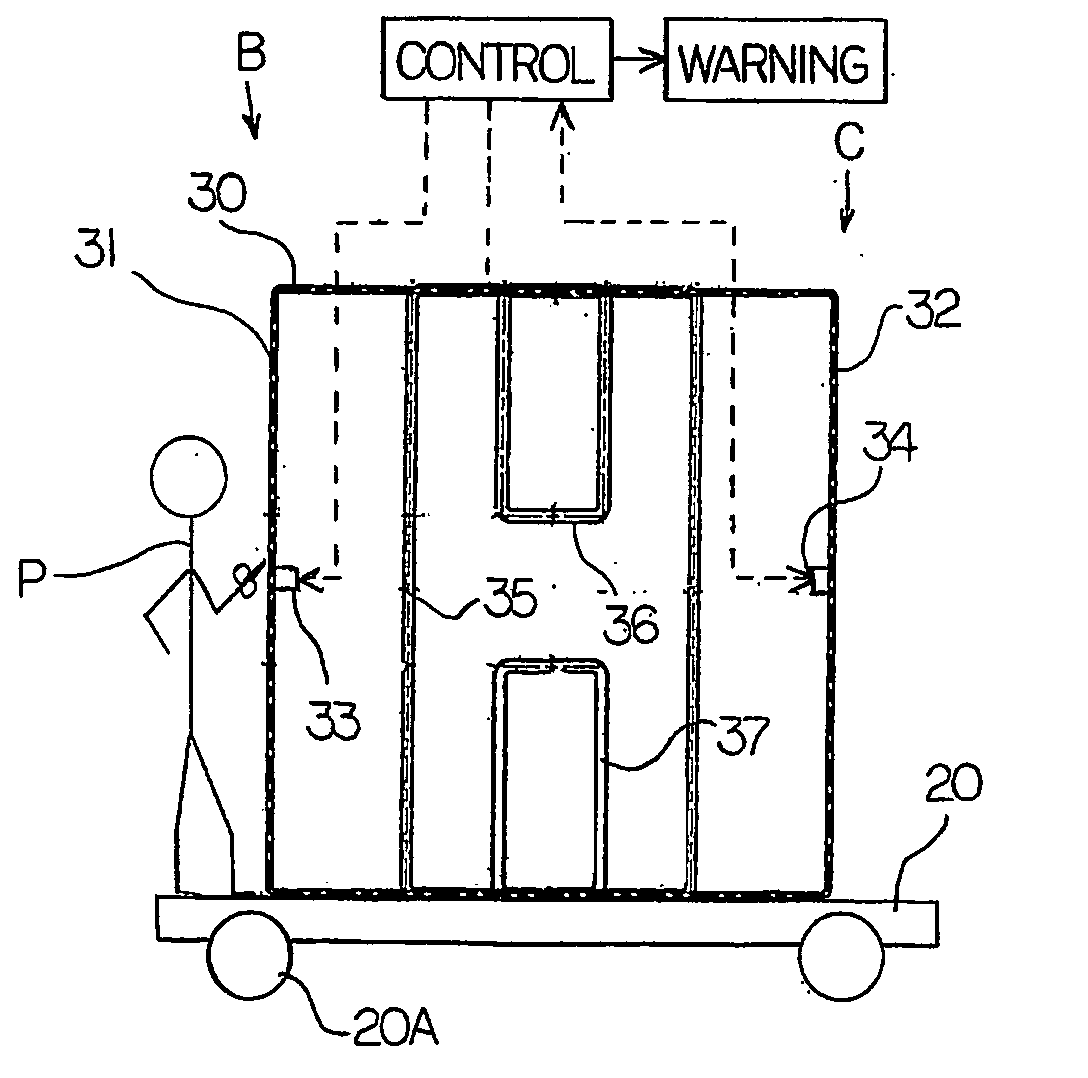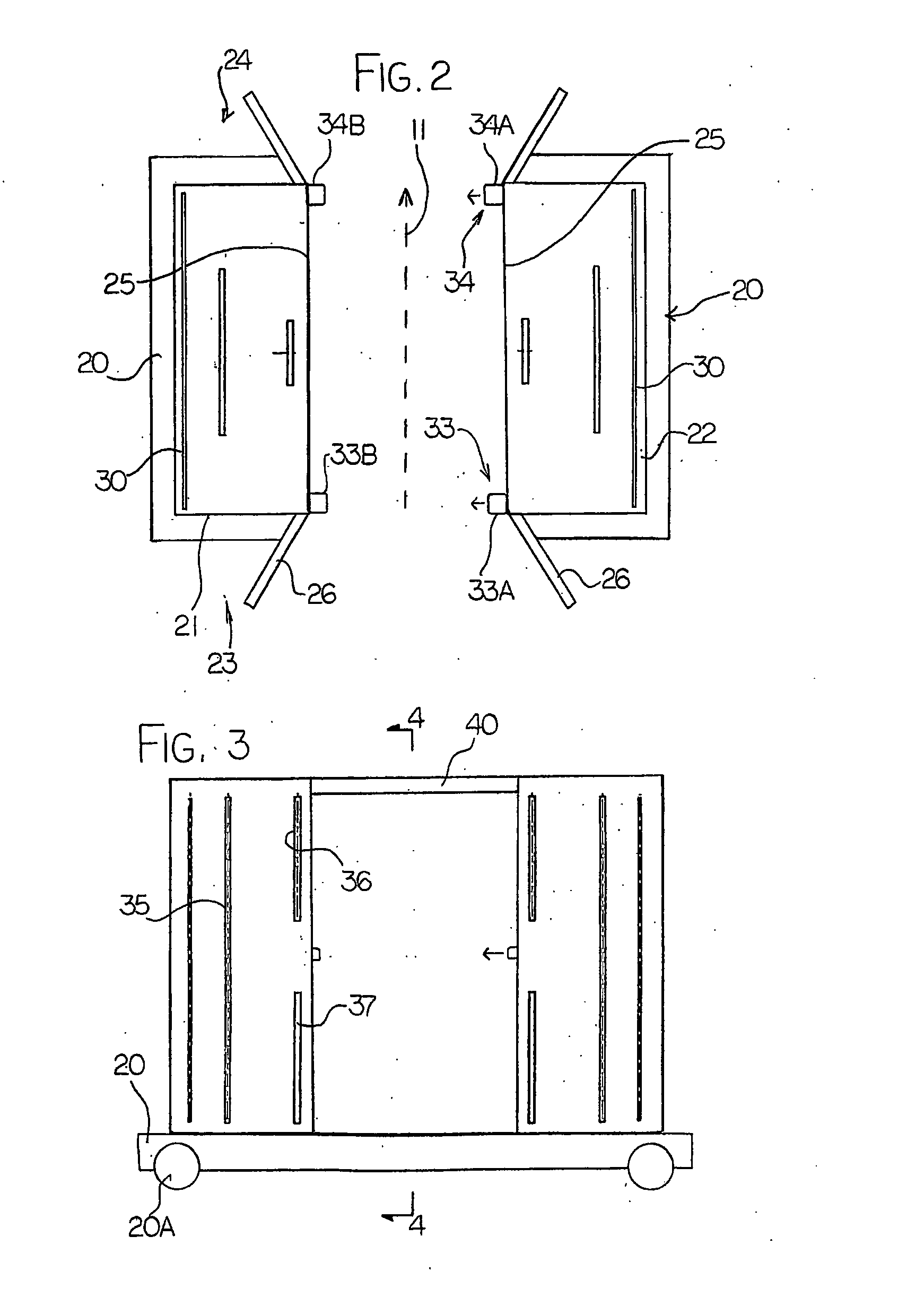Detection of ferromagnetic objects approaching a magnet
- Summary
- Abstract
- Description
- Claims
- Application Information
AI Technical Summary
Benefits of technology
Problems solved by technology
Method used
Image
Examples
Embodiment Construction
[0028] The apparatus for detecting a ferromagnetic object is generally indicated at 10 and comprises guides forming a path 11 between a pair of sensor coils 12 and 13. The sensor coils are arranged so that the path 11 is located in the fringe field of a magnet 14 of a magnetic resonance imaging system.
[0029] The construction arrangement of the magnet can vary and is well known to one skilled in the art so that further detail of the magnetic resonance imaging system is not necessary here. The magnet however forms a main field within a longitudinal bore 15 of the magnet where the sample to be analysed is located. The magnet, however, forms a fringe field including field lines schematically indicated at 16—again a very conventional well-known arrangement. At a suitable location in the fringe field, the path 11 is located so that the path at that position is generally parallel to the field lines. One example among many, wherein the field lines are generally at right angles to the axis ...
PUM
 Login to View More
Login to View More Abstract
Description
Claims
Application Information
 Login to View More
Login to View More - R&D
- Intellectual Property
- Life Sciences
- Materials
- Tech Scout
- Unparalleled Data Quality
- Higher Quality Content
- 60% Fewer Hallucinations
Browse by: Latest US Patents, China's latest patents, Technical Efficacy Thesaurus, Application Domain, Technology Topic, Popular Technical Reports.
© 2025 PatSnap. All rights reserved.Legal|Privacy policy|Modern Slavery Act Transparency Statement|Sitemap|About US| Contact US: help@patsnap.com



